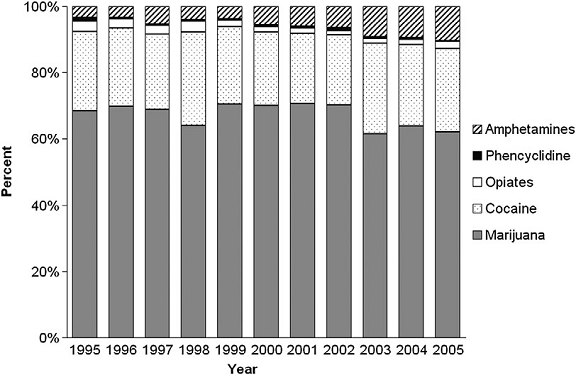Since the early 1980s, more employers have required their employees to complete random drug tests, for drugs such as marijuana, cocaine, and more (Li et al., 2011). In particular, the federal government mandates drug testing among employees who hold “safety-sensitive” occupations, including airline pilots. This week, STASH reviews recent research that examined the prevalence rates of positive drug screens among “safety-sensitive” aviation employees who either completed random drugs tests or recently were involved in an aviation accident (Li et al., 2011). The authors examined whether the use of illicit drugs is associated with an increased risk of airline accident involvement.
Method
- The researchers analyzed aviation employer (i.e., all major airlines, commuter air carriers/air taxi, and non-FAA air traffic controllers) records that detailed the results of drug testing for marijuana, cocaine, amphetamines, opiates, and phencyclidine among employees who held “safety-sensitive” positions (e.g., flight crewmembers, flight attendants, flight instructors, aircraft dispatchers). The records covered the years from 1995 to 2005.
- Analyses utilized two sources of data: standard random drug testing and post-accident drug testing.
- Random testing accounts for about 96% of all drug related records, and involve urine testing a random selection of at least 25% of “safety-sensitive” employees.
- Post-accident urine testing occurs within 32 hours of an accident for employees whose performance might have contributed to an aviation accident (i.e., an event resulting in fatality or serious injury, or substantial damage to an aircraft).
Results
- From 1995-2005, the prevalence of positive screens among random drug tests was 0.64% (i.e., 7,211 of 1,129,922). The prevalence of positive screens among post-accident tests was 1.82% (i.e., 91 of 4,977).
- The odds ratio of accident involvement for employees who tested positive for drugs was 2.90 (95% CI = 2.35-3.57). In other words, employees who tested positive for drugs were almost three times as likely to be involved in an accident as employees who tested negative for drugs.
- Accounting for the prevalence of drug violations observed from random tests, this odds ratio suggests that 1.2% of all aviation accidents were attributable to drug violations during this period.1
Figure. (adapted from Li et al., 2011) shows the distribution of drug violations among aviation employees who hold safety-sensitive positions. Overall, marijuana accounted for 67.3% of violations, cocaine accounted for 23.9%, amphetamines accounted for 6.1%, opiates accounted for 2.1%, and phencyclidine accounted for 0.6%. Click image to enlarge.
Limitations
- The authors noted several limitations, including that their analyses were restricted to a segment of all aviation events; they could not include general (e.g., non-commercial) aviation accidents, which account for 90% of all aviation accidents.
- They also note that they could not assess potential confounding individual-level variables, due to nature of data (i.e., aggregate reports to FAA).
Discussion
Drug testing for employees who have “safety-sensitive” occupations is popular among the public and policy-makers. Research related to this practice is limited, however. These results suggest that drug violations generally are rare among flight crews; about one in every 2,000 random drug tests produces a positive result. Although the use of illicit drugs is rare, it is consequential; it nearly triples the risk of accident involvement. More research is needed to determine whether this observation extends to general aviation accidents.
-Debi LaPlante
What do you think? Please use the comment link below to provide feedback on this article.
Reference
Li, G., Baker, S. P., Zhao, Q., Brady, J. E., Lang, B. H., Rebok, G. W., & DiMaggio, C. (2011). Drug violations and aviation accidents: Findings from the US mandatory Drug Testing Programs. Addiction, 106, 1287-1292.
________________
[1]Attributable Risk = [p x (OR-1)]/[1+ p x (OR-1)], where p=the prevalence of drug violations detected in random testing.





